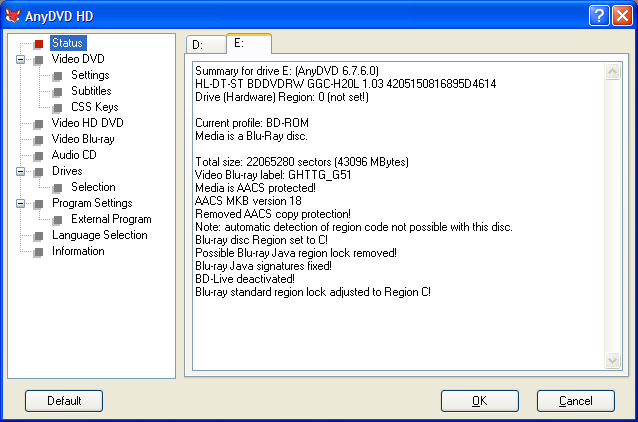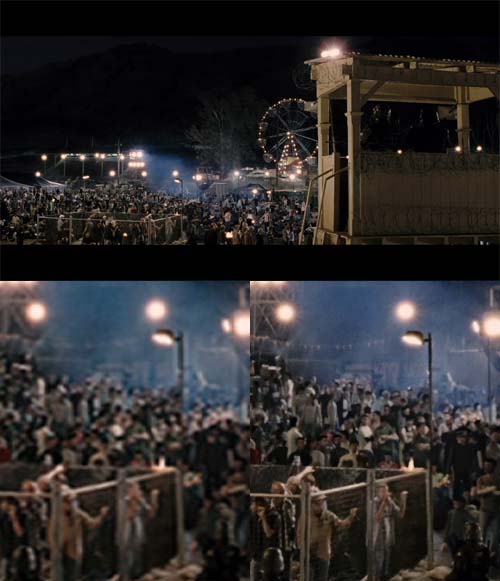I’ve been in contact with the Australian Skeptics about its $100,000 prize for proof of paranormal abilities.
No, I don’t have any such abilities.
What I am hoping is that they will extend eligibility to at least some of the weirder claims in the audiophile community. They are now considering this.
But I thought it might be a good idea to grade the level of plausibility of one category of claims: that different cables can affect sound quality in discernible ways. Obviously, and trivially, they can. A working cable will quite definitely sound different to one that has been severed. So the discussion must be restricted to cables in good operating condition, designed for the particular task. A cheap ten metre HDMI cable may well not carry 1080p60 video. But this results in obvious problems (signal dropouts, or even a complete loss of signal).
So, from the highly implausible to the totally ridiculous:
Loudspeaker cables: Clearly, loudspeaker cables can make a difference in the gross sense that really thin, high impedance cable can waste some of the power which should be used to drive loudspeakers. For example, if a long run of extremely thin cable had a resistance of one ohm, then it could waste up to 20% of the amplifier power at some frequencies with some loudspeakers (ie. those frequencies at which the loudspeaker impedance is at 4 ohms). This is rarely a problem these days since good quality low impedance cable is available for a couple of bucks a metre. Nonetheless, this is clearly a matter of degree. So the question is whether a human can distinguish at all the very subtle effects imposed by an expensive loudspeaker cable, compared to a modestly priced one. (Let alone whether those effects can legitimately described with the overblown descriptions often employed.)
I note that Randi has previously permitted such tests for the JREF $US1,000,000 prize. Nonetheless, if someone were able to reliably tell the difference between two sets of loudspeaker cables, under proper test conditions, then the likely explanation would be one due to a special sensitivity on the part of that person. I’m not sure whether I would admire or pity such a person.
So I don’t think that this should qualify. (I write this reluctantly, because I would like to use it to challenge such claims.)
Analogue interconnects: These are the stereo cables used to connect, for example, a CD player to an amplifier. These have the ability to affect sound quality also, I suppose, but this ability would be at least a couple of orders of magnitude below that of loudspeaker cables. The latter have to deliver a signal from an extremely low impedance source to a moderately low impedance load. Interconnects have to carry a signal from generally a high-ish impedance source to an always high impedance load (47kOhm is the norm).
A/V Digital interconnects: such as optical and coaxial digital audio, and HDMI. Here we’re talking about a stream of digital bits at reasonably high voltage, and so the signal is already pretty damned robust. To the extent that they fail to carry a specific bit, some error correction kicks in. Where redundancy fails, sample interpolation takes place. If a bit is missing entirely, then the results are not subtle. They can manifest as a click in the sound. They won’t — can’t — have airy-fairy effects on the ‘musicality’ of the sound. Anyone who can demonstrate a reliable, repeatable ability to pick between two competent cables used in these roles in a proper double-blinded test is demonstrating a psychic ability.
USB: which is becoming increasingly common. USB signals are extremely robust. They must be because they are an important way of communicating non-audio digital data, such as programs, photo files and so on. In these other formats, not one single digital bit can be permitted to go awry. When was the last time you had a corrupt file due to copying to or from a USB hard drive? Even hundreds of gigabytes of data are sent over regular cheap USB cables to hard drives and other devices at extreme speeds without a single bit of corruption. Cheap USB cables find digital audio a doddle. And if they didn’t the effects wouldn’t have that ‘airy-fairy’ effect on the ‘musicality’ of the sound. Anyone who can demonstrate a reliable, repeatable ability to pick between two competent cables used in these roles in a proper double-blinded test is demonstrating a psychic ability.
Power Cables: I have written about this particular insanity before. If you are pretty clueless about technical matters, you can fall into the trap of thinking that speaker cables, analogue interconnects, digital interconnects and USB cables might affect the sound. After all, in one way or another it passes through them. But the sound goes no where near the chunk of cable you used to plug your amplifier, or whatever, into the wall socket. And there is no way that anything that a (suitably specified and working) power cable does to the power supply would be detectable in the spikey, wavery, mess that we call our power system. Anyone who can demonstrate a reliable, repeatable ability to pick between two competent cables used in these roles in a proper double-blinded test is demonstrating a psychic ability.
Not that it’ll stop them from trying. The Australian Skeptics Challenge Coordinator drew my attention to this review of a $1,000 plus power cable. Yes, some 2,800 words of crap, opening with the claim that this cable’s performance somehow has something to do with Richard Feynman’s conception of quantam electro-dynamics. Feynman, possessor of one of the greatest minds of all time, and a man with little tolerance for loose experimental procedure, would be made furious by what follows.
But, apparently, this power cable is ‘is patently superior to the [$595] Original in every way’. And since the improvement of ‘the Original over OEM cords … was literally mind boggling’, the author should be confident in undertaking a proper blind test between the $1,149 Signature cable and a $5 regular one.
Somehow I don’t think he will, even if he can win $100,000 from the Australian Skeptics, or $1,000,000 from the James Randi Education Foundation.
 Well after my little rant yesterday, how about something rather more positive?
Well after my little rant yesterday, how about something rather more positive?



